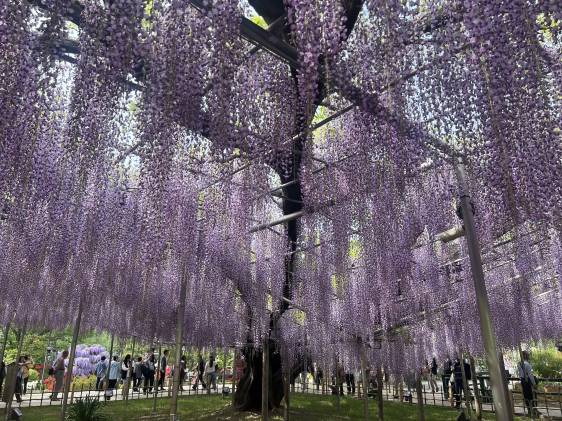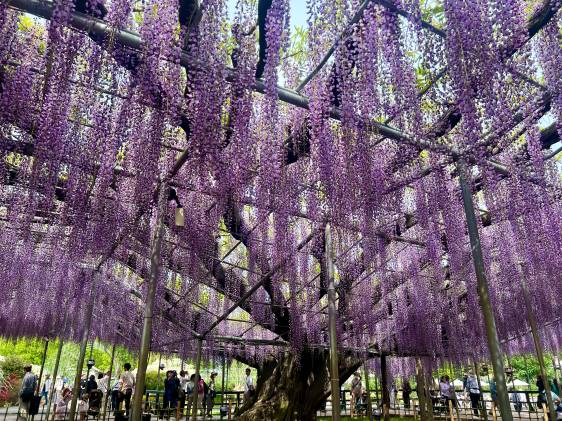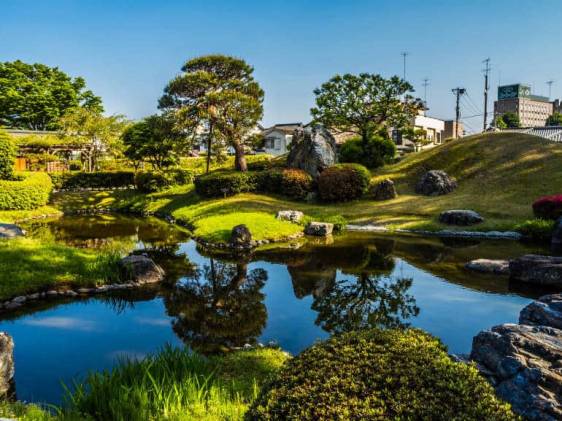Ashikaga City in Tochigi Prefecture is one of those cities that exists out of most people’s realm of knowledge, but we’re here to let you know why it shouldn’t be overlooked.
Not only is it a great day trip from Tokyo, but it also won’t cost much, and you’ll have seen something that most tourists don’t. There’s more to Tochigi than Nikko, and Ashikaga is the proof.
How to get to Ashikaga City

Ashikaga City can be accessed from Tokyo using several routes. If you have a JR Pass, the best way is to get the Tohoku Shinkansen from Tokyo Station To Oyama Station. From there, switch to the Ryomo Line and get off at Ashikaga Flower Park Station for the flower park or Ashikaga Station for Ashikaga Gakkō and other sights. The journey takes 1 hour and 30 minutes. With a JR Pass, it is free, but without it, it will cost you ¥4,590.
An alternative and cheaper route is to either use the Ryomo Limited Express from Asakusa Station direct to Ashikagashi Station and then walk 13 minutes to Ashikaga Station (1 hour 30 minutes, ¥2,050); or — if your plan is to head directly to Ashikaga Flower Park Station — change at Tochigi Station using the Nikko-Kinugawa Line or Tatebayashi Station and then Sano Station on the Ryomo Limited Express.
Ashikaga Flower Park
3-minute walk from Ashikaga Flower Park Station¥400–¥2,100

Ashikaga Flower Park isn’t very old — it only opened in 1968 — but it is big. At a whopping 20.3 acres, the park features many species of flowers throughout Japan’s blooming seasons. The park has created eight separate themes across the year to coincide with the flowerings, and even though all on show are extremely beautiful, the most popular time to go is from mid-April to mid-May or from late October to January. The first because of the famous wisterias, and the second because of the winter illuminations.
Ashikaga Great Wisteria Festival

The Japanese have a special fondness for wisterias — the flower has been featured in poems since the 8th century. The six different species at Ashikaga Flower Park’s Great Wisteria Festival are the country’s oldest and biggest: one of them is over 100 years old and its trellis covers an area of 1000 sq. meters (10763 sq. feet) while others, in various colors and shapes, account for a big part of the park’s beauty and fame.
Over the last few years, the wisteria festival has become increasingly popular with tourists and locals alike. Be prepared that you might need to put up with crowds, especially during full bloom. For a less stressful trip to the wisteria festival, consider going on an all-in-one day tour from Tokyo, which takes you two of Japan’s most famous flower-viewing spots — Ashikaga Flower Park and Hitachi Seaside Park.
Ashikaga Flower Park Illuminations
The Ashikaga Flower Park Illumination event happens every year and is ranked as one of the best illuminations in Japan — for a country that prides itself on its winter illuminations, this is quite an accolade. While happening in autumn and winter, you can still relive the wonder of spring by viewing wisteria-inspired dangling purple lights.
| At the door: ¥1,300 | ||
| At the door: ¥700 | ||
Ashikaga Gakkō
13-minute walk from Ashikaga or Ashikagashi Station¥480

Ashikaga Gakkō was Japan’s first organized school. It was a specialized college founded (allegedly) in the ninth century but resurrected in the early 1400s. The school’s library still contains thousands of volumes of Chinese literature from this period, including some books extinct even in China.
Unless you’re an academic, the above probably won’t interest you much, but what will (and is worth the ¥480 entrance fee) is the beautiful buildings and surrounding greenery. The buildings are open to go in and explore. There are few things in the world more peaceful than sitting on a veranda and gazing at an idyllic Japanese garden.
Other things to do in and around Ashikaga City

Venture further and see what else Ashikaga City is famous for — fabrics. The area was known for its production of fabrics (and particularly silk) from the 17th century onwards. If you are interested in seeing and buying some of these traditional fabrics, you should visit the Ashikaga Textile Museum
Ashikaga Textile Museum
The area is also famous for its soba noodles, so don’t neglect to sample the many dishes on offer.
Disclaimer: While we do our best to ensure it’s correct, information is subject to change. This article was first published in May, 2015 and was last updated in May, 2024, by Jane Pipkin.
Get our Tokyo Cheapo Hacks direct to your inbox
-
 Tokyo’s Best Apartment-Style Hotels, by Area
Tokyo’s Best Apartment-Style Hotels, by Area -
 Highway to Hot Springs: Tokyo to Kusatsu Onsen by Bus
Highway to Hot Springs: Tokyo to Kusatsu Onsen by Bus -
 The Best Pocket Wi-Fi for Visiting Japan — Compared
The Best Pocket Wi-Fi for Visiting Japan — Compared -
 Go-Karting in Tokyo: Everything You Need To Know
Go-Karting in Tokyo: Everything You Need To Know -
 Morning Sumo Practice in Tokyo—Everything You Need To Know
Morning Sumo Practice in Tokyo—Everything You Need To Know -
 First-Time Harajuku Itinerary: Fashion, Street Food, and More
First-Time Harajuku Itinerary: Fashion, Street Food, and More

























